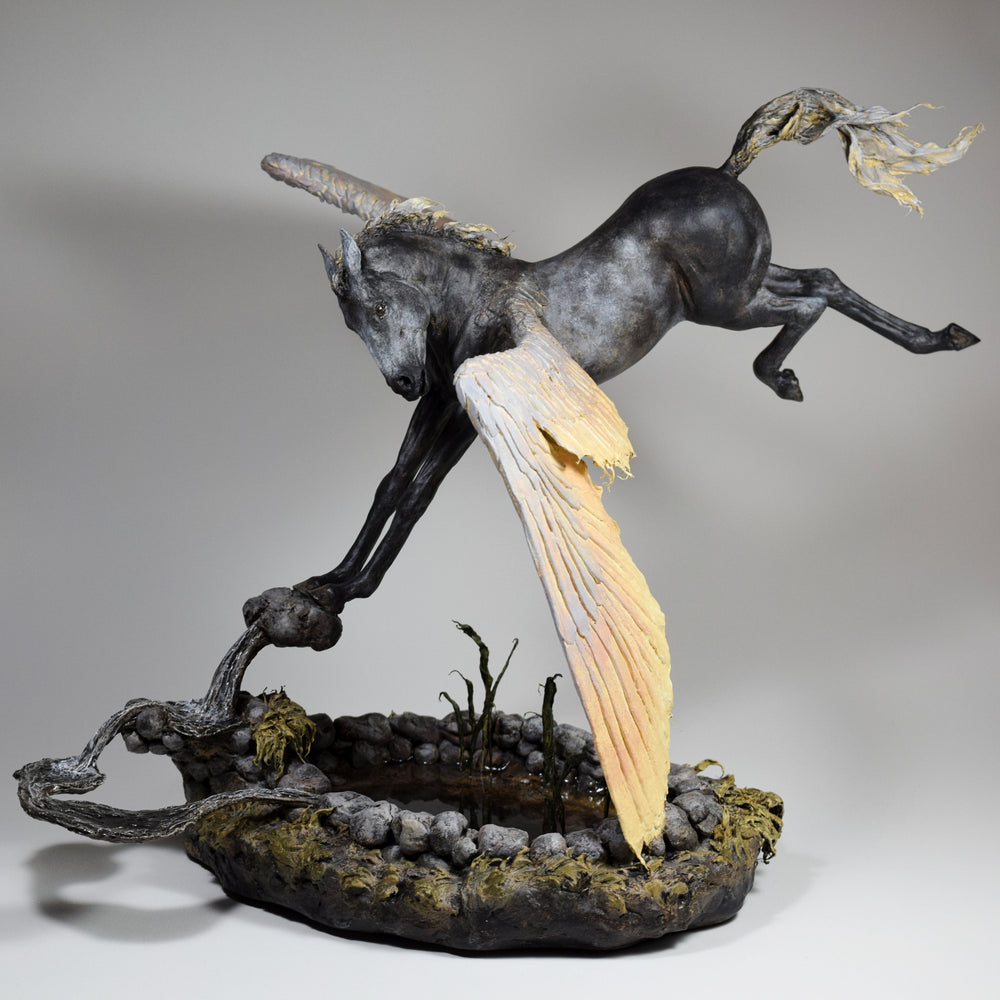
When I start a new sculpture, before I start adding clay or even constructing an armature, one of the first things I ask myself is:
Will this sculpture need a base?
The need for a base is something that should be decided early on in the design stages, though in some cases it’s possible to add afterwards. Air dry or cured clays, as opposed to fired clays, are often lightweight, and a base provides much needed stability. I’ve made sculptures with and without bases, and I want to give a brief introduction to the techniques I use, especially as they relate to air dry clay and equine sculpture.
Materials
Bases can be made from any number of materials; stone, concrete, plastic, metal, etc. Conversely they can also be sculpted from clay.
For a modern look, I find that my Creative Paperclay sculptures are best complemented by a solid wood base. The wood provides enough weight to keep the sculpture balanced without compromising the lightness of the sculpture’s overall weight.
Many of my wooden bases are custom made, often from reclaimed wood and then sealed with tung oil for a lovely and subtle hand-rubbed finish. How the base complements your subject should be a central consideration when it comes to choosing a material and finish. It should not detract from the sculpture itself.

Thin but strong: The issue of horse legs
Here are the facts: horses have thin legs. While they give them grace in life, those lovely legs can cause all sorts of issues when it comes to mounting because they can be fragile, especially when small.
There are several approaches to mounting clay horse sculpture that can help tackle these concerns:
Option 1: No Base
Many air dry clay sculptures don’t require a base if they are well balanced. When making my miniature set Foals Rush In, I opted out of using bases because a base can often create a sense of formality that I felt didn’t fit the sculptures’ spontaneous quality.
Option 2: Rod to Base
Using a wooden, acrylic, or metal rod to attach a sculpture to a base is very common. I use this approach not only when I want to create the illusion of a horse suspended in mid-air, but also when attaching delicate horse legs directly to a wooden base is impossible.
It also works well for portraiture-style sculpture where a horse bust can be raised away from the base and brought to life.

Method - A hole is drilled into the wooden base. A 2-part epoxy is put into the hole and the rod (with sculpture on top) is inserted into it and left to dry. When using metal rods, I use the epoxy almost as a formality because the rod is tapped and then physically screwed into the base.

Option 3: Clay Base
Making a base out of clay is an effective way to mitigate the difficulties of thin horse legs. "In(di)visible" (below) is a good example of that. The armature is integrated right into this clay base, and consequently there’s no movement at the point where her hooves touch the “ground”, ensuring no cracking.
This approach also allows the sculpture attached to a more solid or heavier base material.

So does my clay sculpture need a base?
The most important question to ask yourself is, will the final product will be well-balanced and not get knocked over?
I typically decide right from the get go if an artwork will have a base because it helps to structure the entire sculpture. Bases add a sense of formality and richness, but also make sure your sculpture will stay beautiful for many years to come.
All in all it comes down to a personal choice and what is best suited to an individual piece
"A Sip from Hippocrene" shoes how elaborate mixed-media bases can be.
What's Next?
Did you know you need a strong armature for your sculpture?
Learn how to sculpt thin areas using air dry clay



